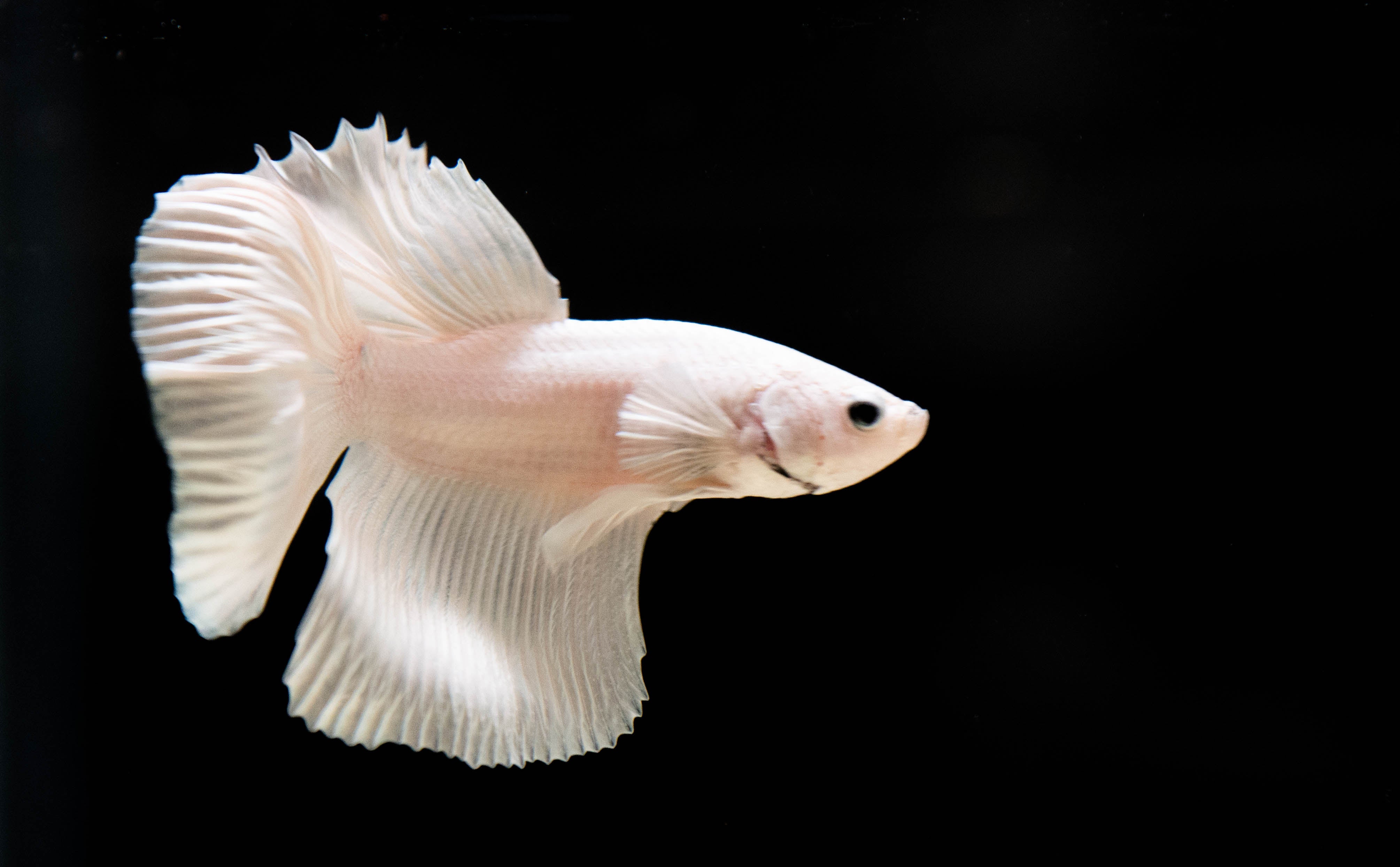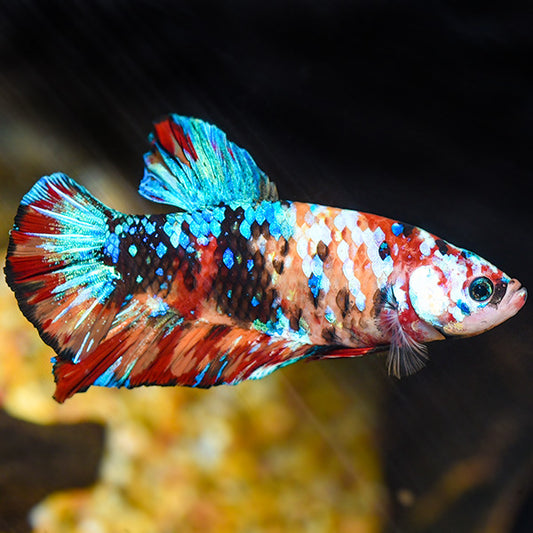Betta Fish Tank Configuration: A Step-by-Step Guide for Beginners
Betta Fish Tank Configuration: A Step-by-Step Guide for Beginners
Blog Article
Reproducing Betta Fish: a Comprehensive Step-By-Step Guide to Successfully Raising Baby Bettas From Eggs to Adulthood
Reproducing Betta fish is a thorough undertaking that needs careful planning and implementation to guarantee the effective development of fry from eggs to develop fish. Selecting genetically varied reproduction couple with desirable qualities is only the beginning; developing an optimal setting and comprehending the intricacies of the breeding process are similarly critical. As the male Betta vigilantly constructs a bubble nest and guards the precious eggs, the subsequent stages of treatment and shift need attention to detail and understanding of ideal practices. Exactly how does one navigate the tough yet fulfilling course of supporting these dynamic creatures to adulthood?

Selecting Reproduction Pairs
When embarking on the journey of reproducing Betta fish, choosing the best breeding sets is important to accomplishing preferable characteristics and a healthy lineage - betta fish. The first step in this process is to recognize the details traits you want to boost or protect, such as shade, fin kind, and body shape. It is vital to pick genetically varied sets to avoid inbreeding, which can bring about health concerns and unwanted qualities
Evaluate prospective breeding candidates meticulously. A healthy male Betta should show lively colors, an active disposition, and well-formed fins, while the lady needs to additionally show vivid coloration and a rounded stubborn belly, suggesting readiness for spawning. Observing the personality of both fish is essential, as hostile or excessively reluctant individuals might not reproduce successfully.
Paperwork of family tree is just as vital. Keeping documents of the parent fish's origins can help you track hereditary characteristics and possible problems. Additionally, get in touch with reputable breeders or on the internet sources for guidance on choosing suitable sets. Ultimately, investing time in the option procedure will considerably improve the likelihood of generating solid, dynamic offspring that fulfill your breeding objectives (betta fish).

Preparing the Reproduction Tank
Producing an optimum breeding atmosphere is a vital action after choosing suitable sets for Betta fish. The reproduction storage tank should be especially created to give convenience and promote the natural breeding habits of the fish. Beginning with a container size of at the very least 10 gallons to make certain ample room for both the man and female Bettas.
Preserve a mild purification system to keep the water clean while preventing strong currents that can stress the fish. Additionally, an air stone can be included to offer oxygenation without interfering with the water surface as well a lot.
Temperature level law is essential; go for a steady array of 78-82 ° F(25-28 ° C) using a reliable heating unit. The pH degree must be kept in between 6.5 and 7.5, and regular water adjustments are essential to guarantee high water top quality.
Incorporate drifting plants or generating mops to develop concealing areas for the female, while also urging bubble nest structure by the male - betta fish. Make certain the container is cost-free from sharp decors and any prospective threats, as the welfare of the fish need to constantly be prioritized throughout this essential phase of reproduction.
The Breeding Process
Generally, the breeding process for Betta fish involves a collection of unique and evident habits that suggest preparedness for recreation. The male Betta begins by constructing a bubble nest at the water's surface, see this website which functions as a website for the fertilized eggs. This nest is crucial, as it offers a risk-free atmosphere for the eggs up until they hatch out.
As soon as the nest is developed, the man will display courtship habits, such as flaring his fins and showing vibrant shades to bring in the female. The female, upon picking up the male's preparedness, will certainly respond by presenting upright stripes along her body, signifying her receptiveness.
The fertilized eggs after that fall to the bubble nest, where the male thoroughly accumulates and returns them to the nest. Following this, the male thinks duty for safeguarding the nest and ensuring the security of the eggs until they hatch out, usually within 24-36 hours.
Caring for Betta Fry
Caring for Betta fry requires careful interest to their environment and nutrition to make certain healthy growth and development. After hatching out, Betta fry are incredibly tiny and prone, requiring a steady and tidy habitat.
Feeding Betta fry is just as vital. Feed them small amounts numerous times a day, being cautious not to overfeed, which can lead to water quality concerns.
Transitioning to Adult Bettas
As Betta fry fully grown, transitioning them to adult Bettas is an essential stage that requires careful administration of their environment and social interactions. This process generally begins when the fry get to around six weeks old, whereupon they can be progressively presented to a much more organized living environment.
To promote this transition, it is necessary to make certain that the water specifications-- such as temperature, pH, and ammonia degrees-- are optimum and secure. Grown-up Betta fish flourish in cozy water (around 78-80 ° F) with a pH of 6.5 to 7.5. Slowly adjust the fry to these problems to lessen tension.
Social communications are one more crucial element; male Bettas are notoriously territorial anonymous and hostile. Consequently, it is a good idea to different men into private tanks as they mature. Women Bettas can be housed together, yet treatment must be required to monitor for indicators of hostility.
Furthermore, dietary adjustments need to be made as the fry grow. Integrate top quality pellets and live foods to sustain their growth and wellness. By handling these elements effectively, you can advertise an effective change to their adult years for your Betta fish.

Conclusion
Successful breeding of Betta fish calls for cautious interest to information throughout the whole process, from choosing genetically varied sets to providing ideal care for fry. By ensuring suitable breeding problems and maintaining water top quality, the possibility of healthy children enhances considerably. Additionally, a balanced diet plan site and progressive adjustment to grown-up environments are important for the growth and growth of Betta fish. Adhering to these steps diligently promotes a prospering populace of Betta fish, enhancing both their health and vigor.
Report this page